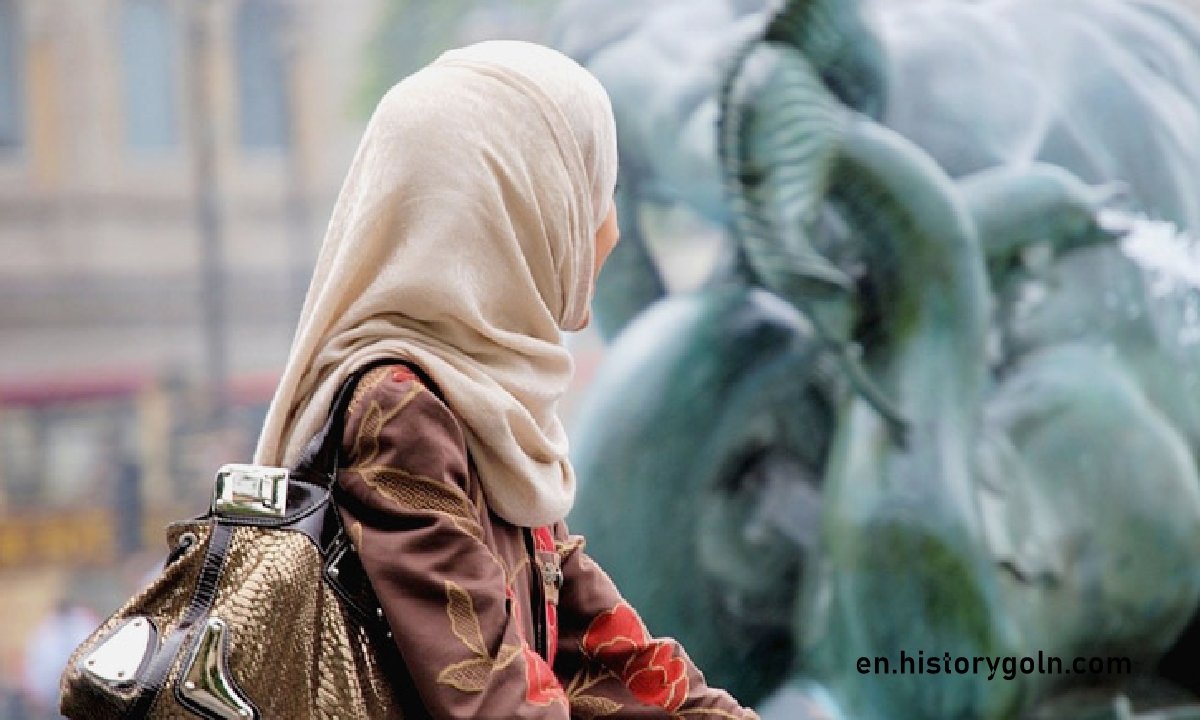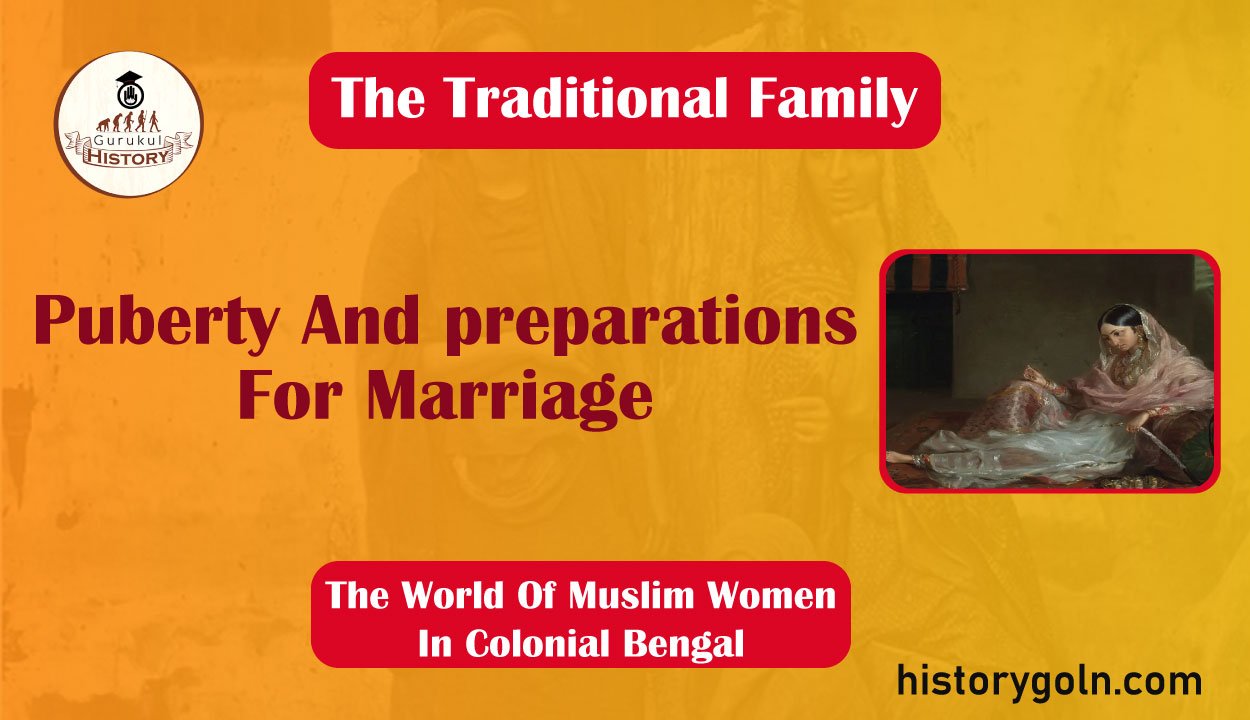Today our topic of discussion is Puberty And preparations For Marriage .
Puberty And preparations For Marriage

With the onset of puberty which occurred early in tropical climates, a girl’s training was complete and she was considered physically and mentally ready for marriage. The onset of menstruation was an important event in a girl’s life, for thereafter she would be considered a truly ‘sexual being, but the matter was hardly ever discussed.
“Menstruation was a closed chapter, a secret operation”, commented a highly educated and independent-minded interviewee. She described the prevalent attitudes towards this subject and general practices as she knew them during the late 1920s as follows:
Girls who had been married very early were now deemed ready for conjugal life and sent to their swashur barhi (abode of the father in-Law). The elders rarely, perhaps never, told them the ‘secrets’ of menstruation.
They would only be ‘cautioned’ and asked to main- tain purdah more strictly. As sanitary pads were not known in those days, improvised substitutes such as clean gauze, cotton or cloth from old saris, or sometimes even mosquito-nets, would be used. Soiled cloth would be burned, buried or thrown, far from the house. As families moved to urban centres, the handy pail came into vogue. A feeling of great shame accompanied the process and none really knew why.
Menstruation and its connection with pregnancy were surrounded by myths and the puritan ethic filtering in from Victorian England made the subject taboo as Bengali women underwent modernization. One interviewee recalled that some girls even denied having periods.
Ideological preparations for marriage were ample. All didactic manuals emphasized the point that the ultimate roles a woman would have to play were those of wife and mother. The grandmother’s advice to the 16-year old Anowara, the heroine of the novel “Anowara” (1914), prior to the latter’s departure for her husband’s home is reminiscent of the advice given to Sita and Shakuntala in Hindu mythology:

It is not ordained that a girl spend her entire life in a father’s house. According to shariat, her husband’s home is her true abode. Moreover, if she fails in her wifely duties all her piety goes in vain. Therefore, consider the prosperity of your in-law’s abode your sacred duty. Thus I send you to your husband’s home,31
Shaista corroborated this in her memoir:
Girls in my days were brought up with the one and only view of doing credit to their mother in Susral. Here again I want to say that the hold this sort of conditioned reflex takes on one’s mind is very strong… So it was that trained to accept marriage as the eventual goal of one’s existence and the arranging of it as the absolute right of one’s parents…. I had no feeling of resentment against it.
Although there were ample preparations for the material aspect of woman- hood (such as cooking, sewing, cleaning, account-keeping) as well as its non-material aspect (such as care of husband, tending him, pleasing him), preparations for the sexual aspect of conjugal life were next to nothing. There were some non-standard sex manuals available during this period, but one suspects that the readership was totally male.
One such manual for Muslims was Lajjatunnessa by A. Ali Ahmad, published from Calcutta in 1897. Several interviewees acknowledge having heard of the book and a few had seen it.33 Another popular book “Adhunika Stree” (The Modern Wife) by Mrs Aqiqunnessa Ahmad was written for the more genteel audience of the 1940s.
But, as noted before, preparations for the sexual aspect of marriage were meagre. Educated girls would sometimes read up ‘adult’ novels in secret and often such knowledge would have to suffice. Shaista described a scene in the andarmahal just prior to her marriage in 1933- how her cousins descended on her, teasing and talking about her future husband, and how that “built up a pseudo-romantic atmosphere for the whole thing”.

However, all brides were not so fortunate. Tales of horror about the bridal night were not uncommon, as one interviewee disclosed. She had seen cousins getting married in the 1930s. They would be shoved (good naturedly) into the bridal chamber by older relatives and would gradually learn to accept the role of meeting a man’s physical need. She had rarely come across a girl who said she enjoyed sex at that time.
See more:
